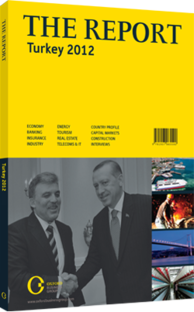OBG talks to Muharrem Dörtkaşl›, President and CEO, Turkish Aerospace Industries (TAI)

Interview: Muharrem Dörtkaşl
How is the defence industry tailored to address national security concerns?
MUHARREM DÖRTKAŞLI: Turkey shares borders with eight countries and has coastal borders extending some 7200 km. Externally, Turkey is maintaining relationships all over the world, and homeland security and national defence are closely related with our neighbours’ political status. Meanwhile internally, Turkey has suffered from decades of terrorism and ethnic conflict. Thus, the defence industry has to provide conventional and unconventional solutions for various challenges.
Given the multinational and variable milieu in which Turkey exists, the defence industry has forged many partnerships. The political and economic relations Turkey maintains with the US, EU, Middle East and North Africa are key strategic factors for ensuring peace, defence procurement and exports. However, the country has increasingly sought independence in the production of critical defence equipment.
What could boost the proportion of domestic defence manufacturing?
DÖRTKAŞLI: The Undersecretariat for Defence Industries (SSM) is working to harmonise the strategies for the private sector, procurement, technology management and defence exports. The share of domestic production varies widely among the different armed forces. Between 80% and 90% of production for land and naval forces is in Turkey, whereas aviation and aircraft engines see the lowest percentage of domestic production.
To increase self-sufficiency and the domestic added value, key technologies are a priority along with the Turkish Armed Forces’ requirements and procurement plans. At this point, Turkey manufactures a variety of defence platforms, however, the manufacturing of electronics and components for key subsystems still needs greater attention. Important investment areas include autonomous command and control, advanced materials, aerospace, energy and propulsion and sensors, among others. Currently, much of the required technology in these areas is obtained via procurement or through development partnerships. The ultimate goal is for Turkish manufacturers to create these products.
How does the government ensure that spending on defence is directed to local firms?
DÖRTKAŞLI: SSM’s procurement models are structured according to the strategic plan and sector strategies. Priority is given to in-house development, in order to enrich the product portfolio and to increase the international market share. SSM is also encouraging indigenous design and development for the critical technologies discussed above.
The second priority is given to the international consortiums – joint developments in the cases where a domestic project is not cost-effective. Partnerships with international consortiums are evaluated with risk sharing models, but on the whole these are seen as a major tool for increasing collaboration with international markets. When the first and second approaches are not achievable, co-production is preferred and priority is given to a local industry player. The last approach is direct procurement, with a prerequisite that local content and export opportunities for domestic industry – via offset tools and direct contracting with the original equipment manufacturer – be made available.
To what extent are the products of defence-industry manufacturing applicable to civilian uses?
DÖRTKAŞLI: Goods and technologies are considered “dual-use” when they can be used for both civil and military purposes. Military technologies are always the leading technologies for strengthening the scientific and technological basis of national industry. Within the health, energy and transportation sectors, where expenses are in the billions of dollars, it has been very important to use resources in the most effective way.
For the aviation sector in particular, TAI’s production capabilities are covering design-development and manufacturing for both military and civilian aircraft.
You have reached the limit of premium articles you can view for free.
Choose from the options below to purchase print or digital editions of our Reports. You can also purchase a website subscription giving you unlimited access to all of our Reports online for 12 months.
If you have already purchased this Report or have a website subscription, please login to continue.

